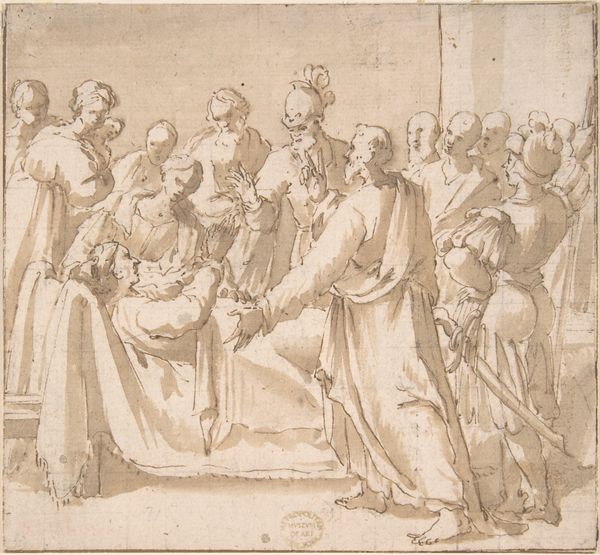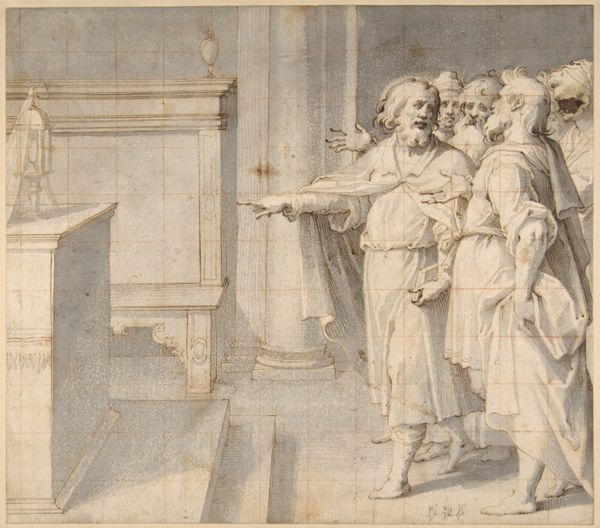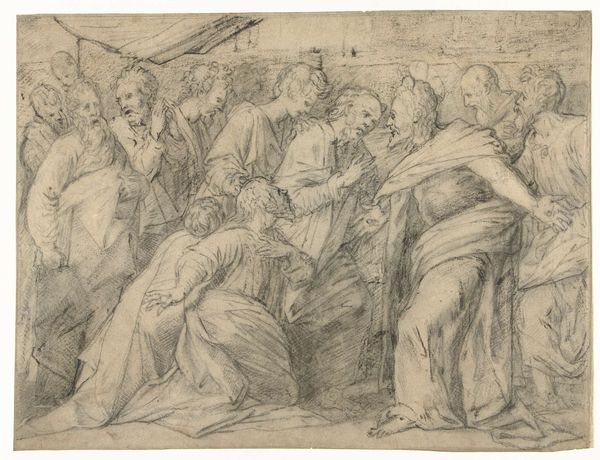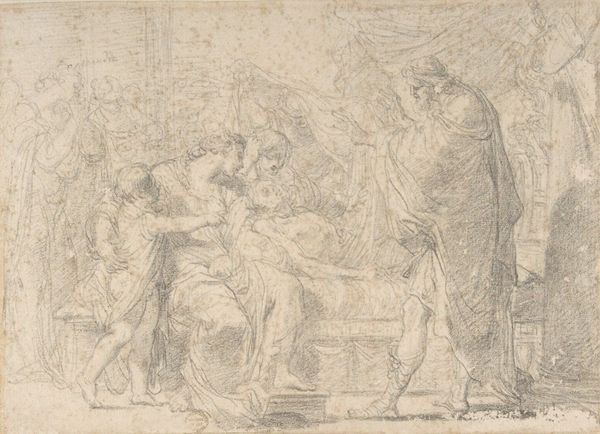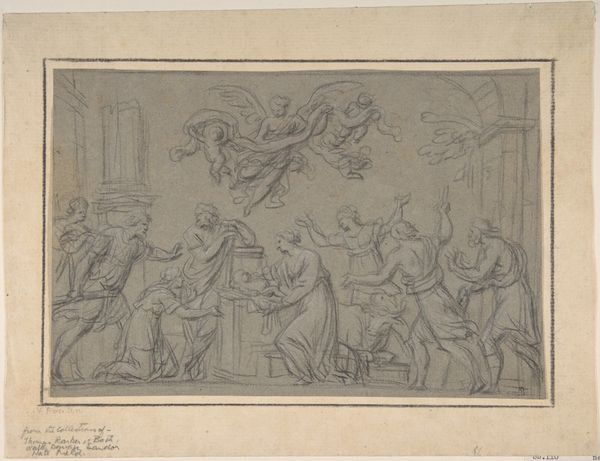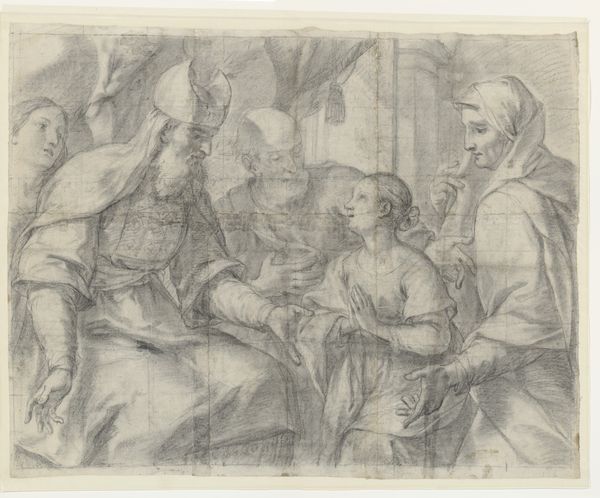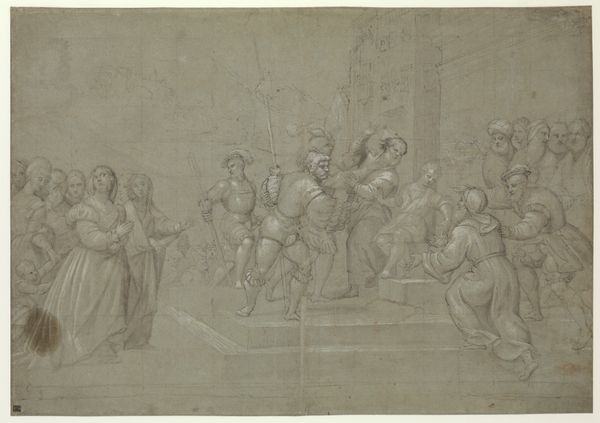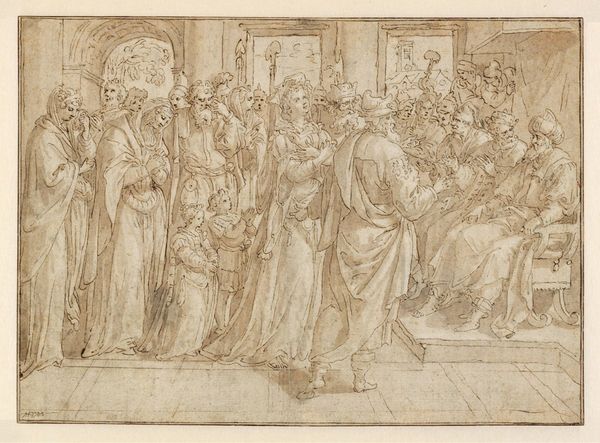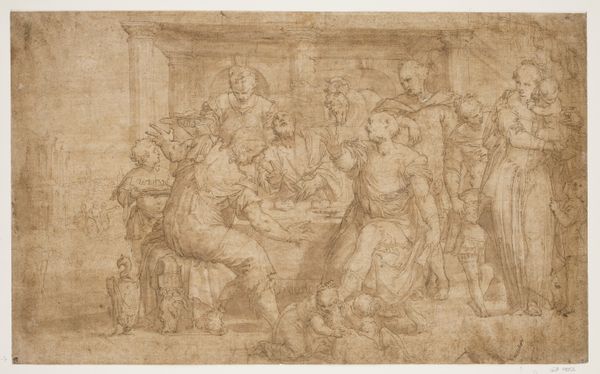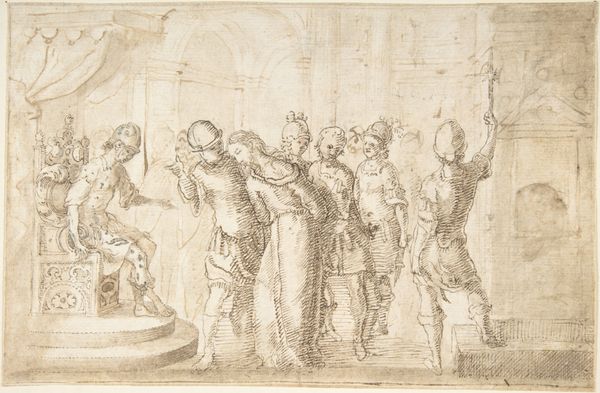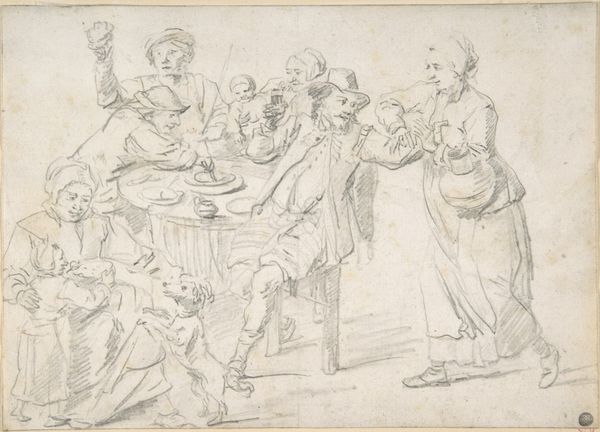
drawing, print, pencil, pen
#
drawing
#
narrative-art
# print
#
pen sketch
#
pencil sketch
#
figuration
#
pencil
#
pen
#
history-painting
#
italian-renaissance
Dimensions: 7-1/2 x 8-1/4 in. (19.0 x 21 cm)
Copyright: Public Domain
Editor: So, here we have "The Coronation of Esther by Ahasuerus," a drawing by Bartolomé Carducho created sometime between 1560 and 1638. The figures are rendered with such delicacy; however, the overlaid grid disrupts that sense of lightness. How do you interpret this work, especially considering its historical and cultural context? Curator: The grid is definitely a crucial entry point. Doesn't it highlight the preparatory nature of the sketch? We’re looking at the planning stages of a painting, an almost mathematical approach to visualizing power, both divinely sanctioned and politically enacted. Consider, for example, the story of Esther, a Jewish woman becoming queen in Persia, potentially saving her people. What tensions are at play here? Editor: That’s interesting. The coronation could signify both a moment of great triumph, as well as the patriarchal constraints placed on Esther, or even the complicated interplay between faith and political power. I wonder, how might contemporary theory inform our reading of it? Curator: Exactly. Can we see Esther as a figure navigating and even subverting the power structures around her? Are there parallels to be drawn between Esther's story and, say, intersectional struggles for recognition and representation today? Where do you see this artwork situated within gender and racial narratives? Editor: I suppose that by analyzing the depiction of Esther, specifically how she's kneeling submissively, we might actually interpret that posture not just as submissive, but potentially strategic. Perhaps this is her way of gaining power within this system. Thank you, this has reshaped my perspective entirely! Curator: And seeing it through a modern, critical lens, hopefully, grants us richer insights into both the artwork and ourselves. It's a conversation between then and now.
Comments
No comments
Be the first to comment and join the conversation on the ultimate creative platform.

